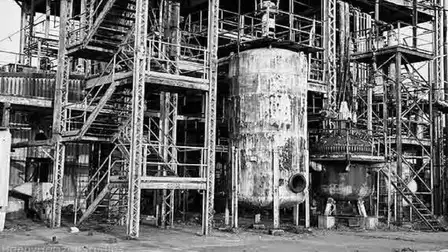Lagatar24 Desk
Bhopal: In a monumental step, 12 containers of hazardous waste from the 1984 Bhopal Gas Tragedy were transported from the abandoned Union Carbide factory to Pithampur under stringent safety protocols. This marks a significant milestone in addressing the remnants of one of the world’s worst industrial disasters.
The operation commenced late Wednesday evening, involving a 250-kilometer-long green corridor. Accompanied by ambulances, fire brigades, and a heavy police escort of 50 personnel, the toxic waste was moved in specially designed leak-proof, fire-resistant containers.
Meticulous Preparations for Safe Transportation
The 337 metric tonnes of toxic waste had been stored at the factory for decades. The containers, each carrying 30 tonnes, were packed with HDPE bags to prevent chemical reactions. Extensive safety measures were undertaken, including sealing a 200-meter radius around the factory.
Over 200 workers executed the loading process in 30-minute shifts, adhering to strict safety protocols and equipped with PPE kits.
Resistance in Pithampur
Civil society in Pithampur has raised strong objections to the waste disposal. Over 10 organizations have called for a shutdown, demanding that the toxic waste be sent abroad instead of being incinerated locally. A petition filed by doctors from Indore’s Mahatma Gandhi Memorial Hospital Alumni Association has questioned the disposal process, citing insufficient trials.
The Pithampur Incineration Plant
The state-of-the-art waste disposal plant at Pithampur, operated by Ramky Enviro Engineers under CPCB guidelines, will burn the waste on a specially constructed wooden platform 25 feet above ground.
Disposal will follow scientific protocols, including tests to determine the season, temperature, and quantity for incineration. At a speed of 90 kg/hour, the process is estimated to take 153 days to complete, which could reduce to 51 days if the speed is increased to 270 kg/hour.
Safety and Environmental Monitoring
To ensure environmental safety, air quality monitoring equipment has been installed at three locations within the factory campus. Additionally, dust and soil from storage areas are being transported for testing to prevent contamination.
Details of the Waste
The waste includes five types of hazardous materials such as soil, pesticide residues, and chemical remnants from manufacturing processes. The Bhopal Gas Tragedy, which involved the release of methyl isocyanate gas, claimed over 5,000 lives in 1984.
In 2015, a trial run incinerated part of the waste at Pithampur, burning 90 kg/hour successfully. Following this, the High Court directed the disposal of the remaining waste by January 6, 2025.








